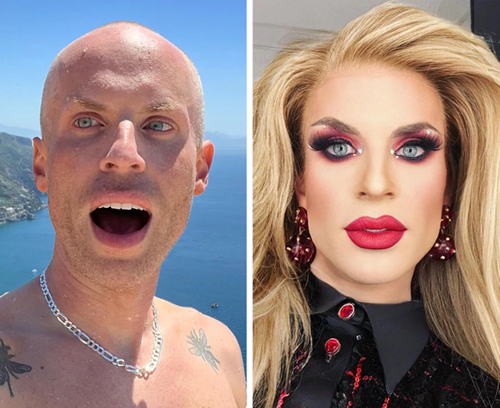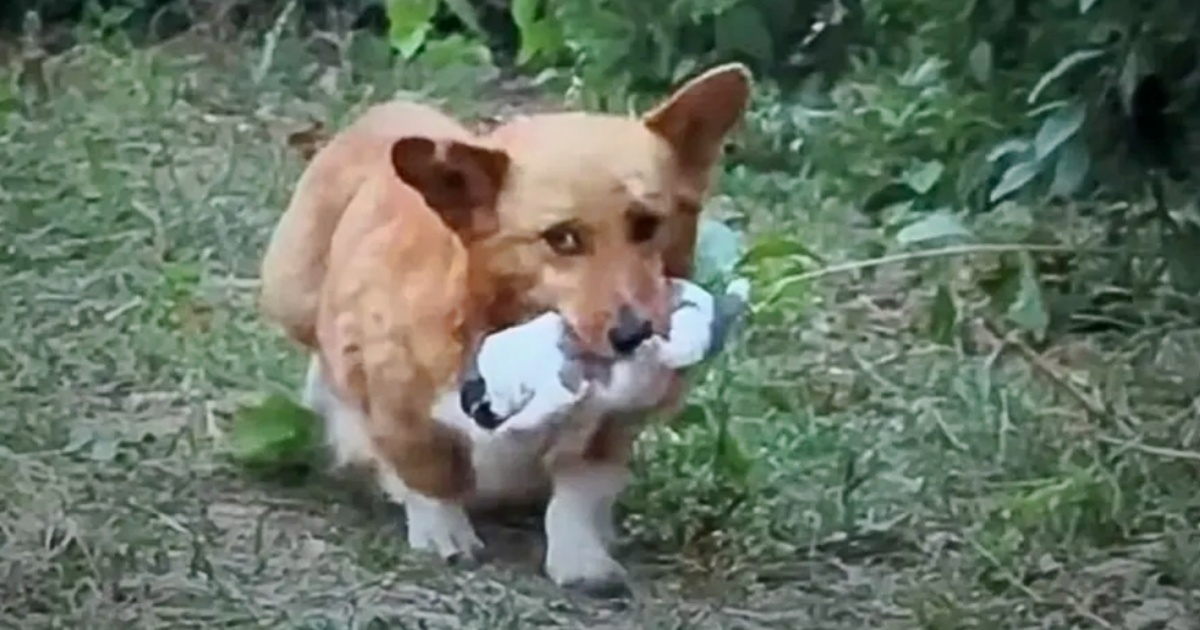

Katya Zamolodchikova — known to millions simply as Katya — is the dazzling stage persona of Brian Joseph McCook, an American drag performer, comedian, actor, and television personality. Over the past decade, Katya has evolved from a breakout contestant on RuPaul’s Drag Race into one of the most celebrated and culturally significant drag artists in the world. With her unique blend of intellect, absurdist humor, and emotional vulnerability, she has managed to turn drag into something more than performance — into philosophy, storytelling, and art.
From Massachusetts to the World Stage. Brian McCook was born on May 1, 1982, in Boston, Massachusetts, and raised in the nearby town of Marlborough. He grew up in a working-class Catholic family and was drawn to performance from an early age. After studying at the Massachusetts College of Art and Design, McCook developed a love for theatre, dance, and experimental art — all of which would later inform his drag persona. He began performing in drag in the early 2000s at small venues in Boston, where Katya quickly became a local favorite for her combination of camp humor, intelligence, and surreal theatricality. McCook has often described drag as both a form of escape and a tool for expression — a way to explore gender, sexuality, and identity beyond conventional boundaries.
The Birth of Yekaterina Petrovna Zamolodchikova
The name Katya Zamolodchikova is intentionally over-the-top — a parody of exotic Slavic identity wrapped in comedy and chaos. Her full drag name, Yekaterina Petrovna Zamolodchikova, sounds authentically Russian but translates to nothing in particular, adding to the absurdity of her fictional backstory. Katya’s character speaks with an exaggerated Russian accent and claims to be a former Soviet gymnast turned drag queen — a backstory that playfully mocks Cold War stereotypes and pop-culture ideas about “the mysterious Russian woman.”
This fictional identity allows Katya to weave an ongoing narrative filled with dark humor, surrealism, and subversion. Her tagline, which she often uses on stage, sums it up perfectly: “My name is Yekaterina Petrovna Zamolodchikova — but you can call me Katya.” This “Russian persona” has become a defining feature of her drag. It’s at once parody and performance art, allowing her to blend political satire, gender commentary, and absurd theater into one unforgettable character.
Rise to Fame: RuPaul’s Drag Race
Katya’s big break came in 2015, when she appeared as a contestant on RuPaul’s Drag Race Season 7. Almost immediately, she captured audiences with her bizarre comedic timing, avant-garde fashion sense, and deep authenticity. Her blend of intelligence and chaos — one moment quoting Dostoevsky, the next joking about aliens or death — set her apart from her competitors.
Though she finished in fifth place, Katya quickly became one of the most beloved contestants in the show’s history. Fans adored her combination of brilliance, vulnerability, and unpredictability. She later returned to compete on RuPaul’s Drag Race: All Stars Season 2, where she finished as a runner-up to Alaska Thunderf***, cementing her reputation as one of the most creative and complex performers the franchise has ever produced.
The Comedy Genius of Katya
Katya’s comedic style defies easy categorization. It’s part stand-up, part performance art, and entirely her own. She weaves together slapstick, philosophy, and absurdity — switching seamlessly between hysterical chaos and profound reflection. Unlike many comedians who rely solely on punchlines, Katya’s humor comes from character work and emotional honesty. She’s known for spontaneous tangents that move from jokes about aliens or addiction to sharp commentary on gender politics, spirituality, and the human condition. Her performances — whether on stage, on YouTube, or live tours — often blur the line between comedy and performance art. She once described drag as “a psychic exorcism through glitter, wigs, and high heels.”
The Russian Persona and Cultural Satire Katya’s faux-Russian identity adds layers of satire to her work. By embodying a hyper-feminine Soviet archetype, she turns Cold War imagery, propaganda aesthetics, and stereotypes about Eastern Europe into comedic gold. She has said that she was drawn to Russian culture because of its intensity, tragedy, and dark humor. Through Katya, McCook plays with ideas of identity and reinvention — exploring how nationality, gender, and trauma can all be performed.
“There’s something inherently funny about being a tragic Russian gymnast who defected to America to become a drag queen,” Katya once joked. But behind the humor lies a deep artistic statement about transformation and self-invention — themes that resonate strongly in queer culture.
UNHhhh: Chaos, Philosophy, and Friendship
Outside of Drag Race, Katya’s most influential work arguably comes from her partnership with Trixie Mattel, another Drag Race alum. Together, they co-host the hit YouTube series UNHhhh — a chaotic, unscripted talk show produced by World of Wonder. Since premiering in 2016, UNHhhh has become one of the most popular drag-based shows online, earning millions of loyal fans. The title itself, UNHhhh, is a joke — a wordless sound that perfectly captures the show’s absurdist energy.
Each episode features Katya and Trixie discussing random topics — love, death, fashion, fame, or mental illness — in a stream-of-consciousness format full of jump cuts, surreal editing, and brilliant one-liners. Their chemistry is unmatched. Trixie plays the glamorous, sharp-tongued straight man, while Katya is the unpredictable philosopher, oscillating between brilliance and total nonsense. Together, they’ve built one of the most successful comedy duos in queer entertainment. The success of UNHhhh even led to their short-lived but critically acclaimed television spinoff, The Trixie & Katya Show, which aired on Viceland.
Mental Health, Honesty, and Resilience
Behind the humor and glamour, Katya has spoken candidly about her struggles with addiction, anxiety, and mental health. In 2018, she took a hiatus from performing, citing exhaustion and the need to prioritize her recovery. In later interviews, she explained that the pressures of fame and substance abuse had led to a breakdown, but that stepping away allowed her to rebuild herself. Her decision to speak openly about these issues has inspired fans worldwide and made her an advocate for mental health awareness in the LGBTQ+ community. Katya often integrates these experiences into her comedy, turning pain into laughter without trivializing it. She uses humor as a healing tool — both for herself and for her audience. Her openness has made her not only a performer but a role model for self-acceptance, recovery, and resilience.
Author, Performer, Icon
In addition to her drag and comedy work, Katya has also achieved success as an author. Alongside Trixie Mattel, she co-wrote the bestselling “Trixie and Katya’s Guide to Modern Womanhood” (2020) — a hilarious parody of traditional self-help books that mixes drag wisdom, life advice, and absurd humor. Their second collaboration, “Working Girls: Trixie and Katya’s Guide to Professional Womanhood” (2022), explores work life, ambition, and identity with the same wit and camp sensibility. Both books have been praised for their humor, honesty, and ability to capture the unique spirit of drag as both performance and philosophy. Katya also continues to tour internationally, performing in live shows that combine stand-up, music, storytelling, and surreal visuals. Her performances draw crowds of fans from every corner of the world — proof of her global appeal and cultural influence.
Cultural Impact and Legacy
Katya’s influence extends far beyond the drag stage. She has become a symbol of creativity, freedom, and individuality — an artist who challenges conventional ideas about gender, nationality, and sanity. Her ability to mix absurd humor with emotional intelligence has earned her a devoted fan base across generations. Through her art, Katya has shown that drag is more than illusion — it’s transformation. Her Russian character, her wit, her openness about mental health, and her artistic courage have all contributed to making her a true cultural icon of the modern queer era.
In a world that often demands conformity, Katya celebrates chaos, contradiction, and the beauty of being unapologetically human. Whether she’s lip-syncing to a 1980s Russian pop song, delivering existential monologues, or collapsing into laughter mid-sentence, Katya represents the idea that art can be both ridiculous and profound — sometimes in the same breath. As she once said during an interview: “Drag is about showing people that you can be whatever you want, whenever you want, and that sometimes, the most powerful thing you can do… is laugh at everything — including yourself.” And that’s exactly what Katya Zamolodchikova continues to do: bend gender, time, and reality — all with a wig, a wink, and a little bit of madness.
Katya Zamolodchikova — known to millions simply as Katya — is the dazzling stage persona of Brian Joseph McCook, an American drag performer, comedian, actor, and television personality. Over the past decade, Katya has evolved from a breakout contestant on RuPaul’s Drag Race into one of the most celebrated and culturally significant drag artists in the world. With her unique blend of intellect, absurdist humor, and emotional vulnerability, she has managed to turn drag into something more than performance — into philosophy, storytelling, and art.
From Massachusetts to the World Stage. Brian McCook was born on May 1, 1982, in Boston, Massachusetts, and raised in the nearby town of Marlborough. He grew up in a working-class Catholic family and was drawn to performance from an early age. After studying at the Massachusetts College of Art and Design, McCook developed a love for theatre, dance, and experimental art — all of which would later inform his drag persona. He began performing in drag in the early 2000s at small venues in Boston, where Katya quickly became a local favorite for her combination of camp humor, intelligence, and surreal theatricality. McCook has often described drag as both a form of escape and a tool for expression — a way to explore gender, sexuality, and identity beyond conventional boundaries.
The Birth of Yekaterina Petrovna Zamolodchikova
The name Katya Zamolodchikova is intentionally over-the-top — a parody of exotic Slavic identity wrapped in comedy and chaos. Her full drag name, Yekaterina Petrovna Zamolodchikova, sounds authentically Russian but translates to nothing in particular, adding to the absurdity of her fictional backstory. Katya’s character speaks with an exaggerated Russian accent and claims to be a former Soviet gymnast turned drag queen — a backstory that playfully mocks Cold War stereotypes and pop-culture ideas about “the mysterious Russian woman.”
This fictional identity allows Katya to weave an ongoing narrative filled with dark humor, surrealism, and subversion. Her tagline, which she often uses on stage, sums it up perfectly: “My name is Yekaterina Petrovna Zamolodchikova — but you can call me Katya.” This “Russian persona” has become a defining feature of her drag. It’s at once parody and performance art, allowing her to blend political satire, gender commentary, and absurd theater into one unforgettable character.
Rise to Fame: RuPaul’s Drag Race
Katya’s big break came in 2015, when she appeared as a contestant on RuPaul’s Drag Race Season 7. Almost immediately, she captured audiences with her bizarre comedic timing, avant-garde fashion sense, and deep authenticity. Her blend of intelligence and chaos — one moment quoting Dostoevsky, the next joking about aliens or death — set her apart from her competitors.
Though she finished in fifth place, Katya quickly became one of the most beloved contestants in the show’s history. Fans adored her combination of brilliance, vulnerability, and unpredictability. She later returned to compete on RuPaul’s Drag Race: All Stars Season 2, where she finished as a runner-up to Alaska Thunderf***, cementing her reputation as one of the most creative and complex performers the franchise has ever produced.
The Comedy Genius of Katya
Katya’s comedic style defies easy categorization. It’s part stand-up, part performance art, and entirely her own. She weaves together slapstick, philosophy, and absurdity — switching seamlessly between hysterical chaos and profound reflection. Unlike many comedians who rely solely on punchlines, Katya’s humor comes from character work and emotional honesty. She’s known for spontaneous tangents that move from jokes about aliens or addiction to sharp commentary on gender politics, spirituality, and the human condition. Her performances — whether on stage, on YouTube, or live tours — often blur the line between comedy and performance art. She once described drag as “a psychic exorcism through glitter, wigs, and high heels.”
The Russian Persona and Cultural Satire Katya’s faux-Russian identity adds layers of satire to her work. By embodying a hyper-feminine Soviet archetype, she turns Cold War imagery, propaganda aesthetics, and stereotypes about Eastern Europe into comedic gold. She has said that she was drawn to Russian culture because of its intensity, tragedy, and dark humor. Through Katya, McCook plays with ideas of identity and reinvention — exploring how nationality, gender, and trauma can all be performed.
“There’s something inherently funny about being a tragic Russian gymnast who defected to America to become a drag queen,” Katya once joked. But behind the humor lies a deep artistic statement about transformation and self-invention — themes that resonate strongly in queer culture.
UNHhhh: Chaos, Philosophy, and Friendship
Outside of Drag Race, Katya’s most influential work arguably comes from her partnership with Trixie Mattel, another Drag Race alum. Together, they co-host the hit YouTube series UNHhhh — a chaotic, unscripted talk show produced by World of Wonder. Since premiering in 2016, UNHhhh has become one of the most popular drag-based shows online, earning millions of loyal fans. The title itself, UNHhhh, is a joke — a wordless sound that perfectly captures the show’s absurdist energy.
Each episode features Katya and Trixie discussing random topics — love, death, fashion, fame, or mental illness — in a stream-of-consciousness format full of jump cuts, surreal editing, and brilliant one-liners. Their chemistry is unmatched. Trixie plays the glamorous, sharp-tongued straight man, while Katya is the unpredictable philosopher, oscillating between brilliance and total nonsense. Together, they’ve built one of the most successful comedy duos in queer entertainment. The success of UNHhhh even led to their short-lived but critically acclaimed television spinoff, The Trixie & Katya Show, which aired on Viceland.
Mental Health, Honesty, and Resilience
Behind the humor and glamour, Katya has spoken candidly about her struggles with addiction, anxiety, and mental health. In 2018, she took a hiatus from performing, citing exhaustion and the need to prioritize her recovery. In later interviews, she explained that the pressures of fame and substance abuse had led to a breakdown, but that stepping away allowed her to rebuild herself. Her decision to speak openly about these issues has inspired fans worldwide and made her an advocate for mental health awareness in the LGBTQ+ community. Katya often integrates these experiences into her comedy, turning pain into laughter without trivializing it. She uses humor as a healing tool — both for herself and for her audience. Her openness has made her not only a performer but a role model for self-acceptance, recovery, and resilience.
Author, Performer, Icon
In addition to her drag and comedy work, Katya has also achieved success as an author. Alongside Trixie Mattel, she co-wrote the bestselling “Trixie and Katya’s Guide to Modern Womanhood” (2020) — a hilarious parody of traditional self-help books that mixes drag wisdom, life advice, and absurd humor. Their second collaboration, “Working Girls: Trixie and Katya’s Guide to Professional Womanhood” (2022), explores work life, ambition, and identity with the same wit and camp sensibility. Both books have been praised for their humor, honesty, and ability to capture the unique spirit of drag as both performance and philosophy. Katya also continues to tour internationally, performing in live shows that combine stand-up, music, storytelling, and surreal visuals. Her performances draw crowds of fans from every corner of the world — proof of her global appeal and cultural influence.
Cultural Impact and Legacy
Katya’s influence extends far beyond the drag stage. She has become a symbol of creativity, freedom, and individuality — an artist who challenges conventional ideas about gender, nationality, and sanity. Her ability to mix absurd humor with emotional intelligence has earned her a devoted fan base across generations. Through her art, Katya has shown that drag is more than illusion — it’s transformation. Her Russian character, her wit, her openness about mental health, and her artistic courage have all contributed to making her a true cultural icon of the modern queer era.
In a world that often demands conformity, Katya celebrates chaos, contradiction, and the beauty of being unapologetically human. Whether she’s lip-syncing to a 1980s Russian pop song, delivering existential monologues, or collapsing into laughter mid-sentence, Katya represents the idea that art can be both ridiculous and profound — sometimes in the same breath. As she once said during an interview: “Drag is about showing people that you can be whatever you want, whenever you want, and that sometimes, the most powerful thing you can do… is laugh at everything — including yourself.” And that’s exactly what Katya Zamolodchikova continues to do: bend gender, time, and reality — all with a wig, a wink, and a little bit of madness.










































